post and photos by Kathy Bildner, Chapter Member and Grant Committee Chair
“A seed is a flowering plant’s unit of reproduction, capable of developing into another such plant” (Oxford dictionary)
It is time to collect seeds for the St. Louis Wild ones November seed exchange. Or maybe like me, you have been collecting for months.
We request that you
- clean the seeds away from the flower or fruit
- package them in small paper envelopes
- label them with the plant name (common and scientific if you can)
- date them, add your own name if you like so others can ask you questions
We will lay them out on tables at the exchange
More about seeds
Some seeds and their fruits are beautiful
Some are odd
Some have interesting patterns
Some seeds are only on the outside edge of the disc
Some seeds capsules look like they came from outer space
While gathering seeds, it is not always easy to know what the actual seed looks like. Some are obvious like the nutlets of coneflowers or the dust from the cardinal flower, others are so hidden in the drying flower, you need a magnifier to see what is the seed. When in doubt, collect the dry flower heads and put them in a paper bag (never plastic) and wait until they are so dry, they fall apart. Hopefully the seeds will be more obvious to you.
Not all seeds are viable. If you pick them before they are ripe, they will not germinate. It can take years of watching your flowers to know when the time is near to collecting. If you wait too long, they may be gone. Timing is important, for example: when the Bellflower fruits start to open up, collect the seeds then or by the morning they have all popped out as the fruit opens up all the way.
There are reasons your plants may not make viable seeds.
If your plant does not make seeds at all, it may be because they are dioecious. Meaning you need a male (staminate) and female (pistillate) plant for there to be fruit/seeds. Only 4% of Missouri native plants are dioecious. I mention them here anyway because some of them are our favorites. Meadow rues (Thalictrum) and Pussy toes (Antennarias) are two flowering plants that fit this description. It is more common in trees and shrubs such as: Hop tree/wafer ash (Ptelea trifoliata), Sassafras tree (Sassafras albidum), Spicebush (Lindera benzoin), Fringe tree (Chionanthus virginicus), Goat’s beard (Aruncus dioicus).
There may be plants in your yard that cannot set fruit because they are too closely related. I have several of these in my yard. They each have a story of their own. The one I will tell you now, happened this year. The Dwarf crested iris (Iris cristata) in my yard has been spreading by rhizomes and flowering for 30 plus years. They have never made fruit. All of my plants are from one single plant that I added to my yard all those years ago. It was suggested I add a plant from a genetically different plant. I bought one last Fall and added it to my flower bed. This year for the first time, I have fruit and seeds.
The different shapes and sizes and textures of seeds are amazing. Each has some evolutionary purpose. One of those purposes is dispersal. Dispersal mechanisms are important to the long-term survival of plants. Some seeds stick to birds and animals to be moved to new locations, some fly on the wind or float down a stream, those used for food go through the GI track of these creatures. The seeds in the fruits they eat often come out whole ready to plant themselves and grow. Seeds moved around by insects often have a tasty fleshy tissue attached to the side of the plant called elaiosomes.
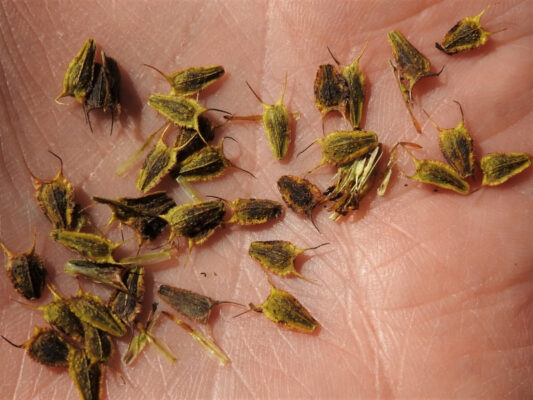
Tickseed sunflower (Bidens aristosa) seeds, waiting to stick to an animal and be moved away from the parent plant
I have photographed many kinds of seeds. I noticed that seeds from a certain group or family of plants can be very similar. The Silene family has many Missouri natives. The ones I have photographed: Fire pink (Silene virginca), Wild pink (Silene caroliniana), Royal catchfly (Silene regia), Starry campion (Silene stellata) all look alike. The sizes may be different, but they all have a lumpy surface with a slight indentation.
In the end, remember not to collect all of the seeds out of your yard. Leave seeds for the birds and other critters in your yard. I suggest leaving the flower stalks standing until early Spring. We like to observe seeds, photograph them, collect them, and germinate them. For us it is a hobby or fun. For the wildlife in our yards, it is survival.

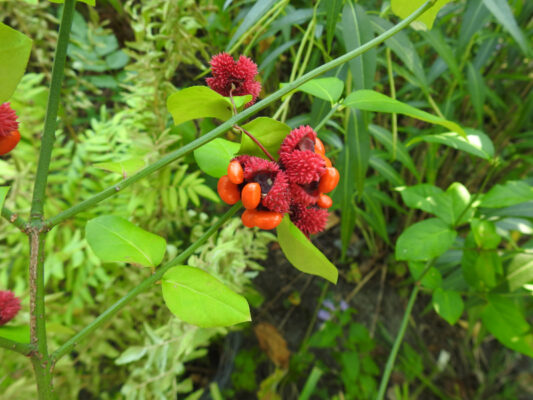
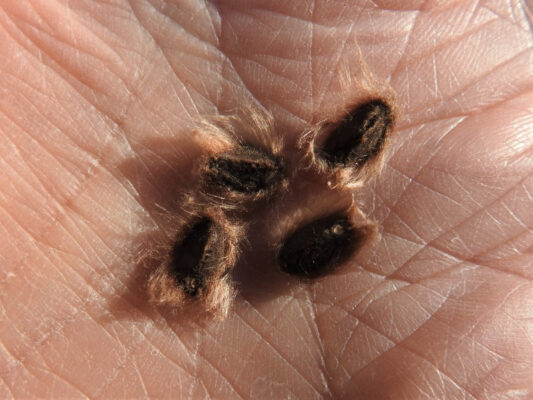
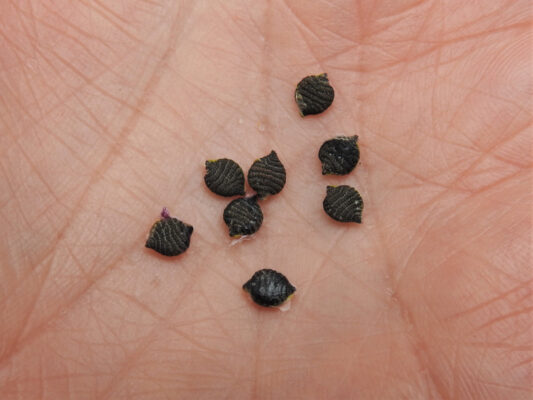
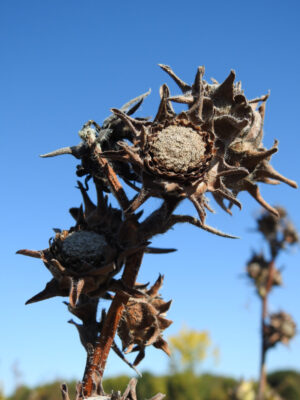
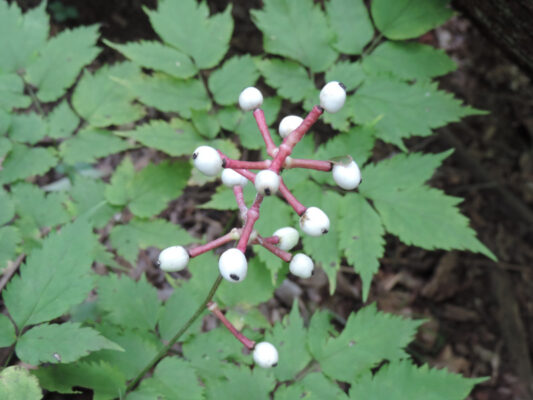
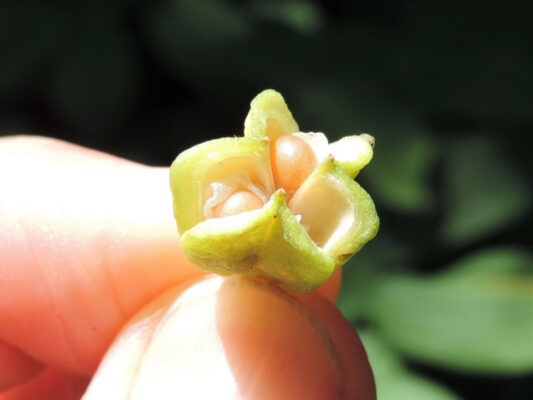
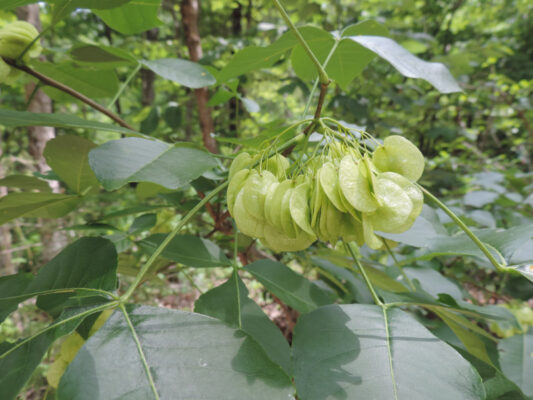
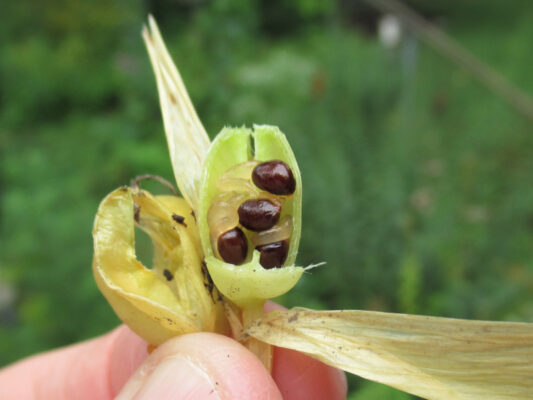
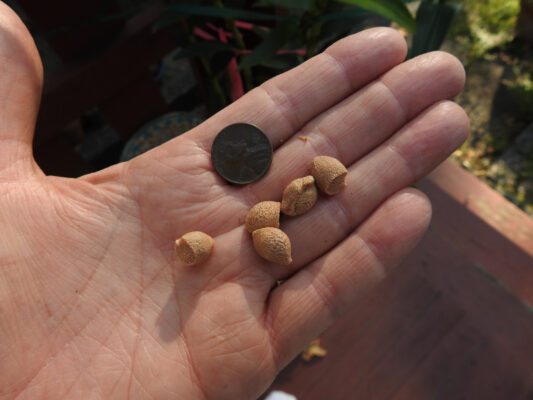

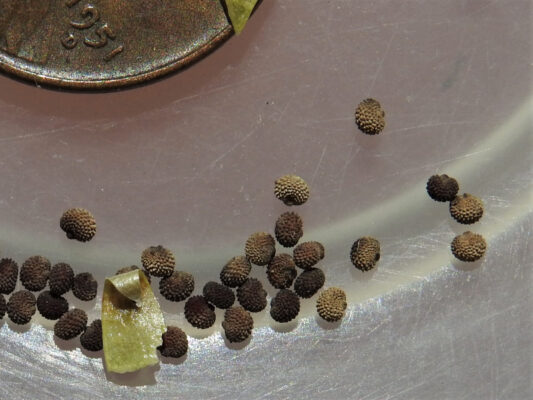

Great article!